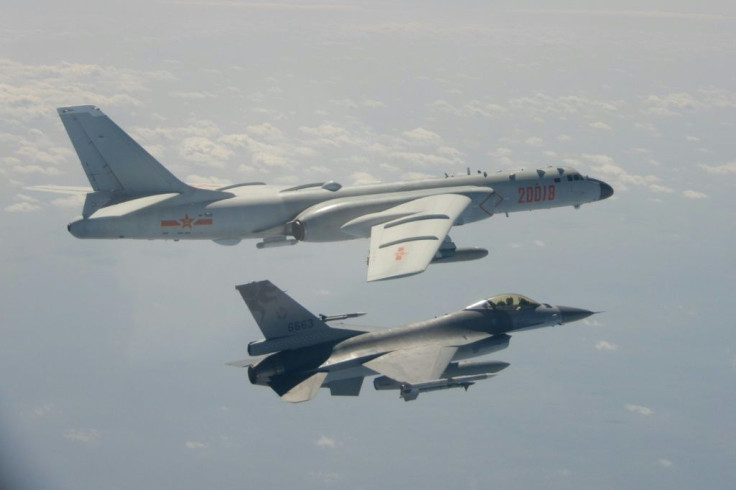South China Sea: China Continues Its Aggression Against Taiwan, Sends 25 Warplanes Into Air Defense Zone
KEY POINTS
- PLA aircraft included fighters and nuclear-capable bombers
- Taiwan responded by scrambling combat aircraft and radio warnings
- The US Monday warned China against its belligerent behavior
In the largest incursion since China launched its offensive against Taiwan, 25 PLA aircraft, including fighters and nuclear-capable bombers, entered Taiwan’s air defense identification zone (ADIZ) on Monday.
Taiwan's Defense Ministry said 14 J-16 fighter jets, four J-10 fighter jets, four H-6K bombers, two anti-submarine warfare planes, and an airborne early warning and control plane breached its airspace, reports CNN.
The statement from the ministry added that Taiwan responded by scrambling combat aircraft, alerting missile defense systems, and issuing radio warnings to the Chinese planes that they had entered the southwestern corner of the island's self-declared air defense identification zone (ADIZ).
Monday's was the largest breach of air space since March 25 when 20 PLA jets entered Taiwan's ADIZ. Beijing has been sending warplanes and conducting regular military drills in the Taiwan strait since September.
The latest incursions come a day after the US hit out against Chinese aggression against Taiwan, saying it "would be a serious mistake for anyone to try to change the existing status quo by force.”
US Secretary of State Antony Blinken had said the United States is concerned by China’s actions and "Biden administration is committed to ensuring that Taiwan "has the ability to defend itself."
"What we’ve seen, and what is of real concern to us, is increasingly aggressive actions by the government in Beijing directed at Taiwan," Blinken said.
The US State Department had also announced it would lift rules to make it easier for US government officials to meet with Taiwanese representatives.
Bonnie Glaser, director of the China Power Project at the Center for Strategic and International Studies, told CNN that Monday's Chinese action continued a pattern.
"Every time the United States takes a position regarding Taiwan which China doesn't like or if Taiwan does something that they don't like, it usually ratchets up the activity inside Taiwan's air defense identification zone, and sometimes around some of the islands that Taiwan occupies in the South China Sea," Glaser said.
Meanwhile, Taiwan, which has already been vocal about its willingness to open fire, has launched an ambitious program to modernize the armed forces.
The 10,600-tonne-amphibious warfare ship named Yu-Shan, which is part of the program, will enter service next year. The ship will be equipped with a cannon for use against air and surface targets, anti-aircraft missiles, and rapid-fire Phalanx close-in anti-aircraft and anti-missile guns.
State-backed CSBC Corporation Taiwan chairman Cheng Wen-lung said as well as being an amphibious warfare vessel, the ship will be used for transport to Taiwan’s possessions in the disputed South China Sea and offshore Taiwanese islands which lie close to the Chinese coast, long considered easy targets for China in the event of war.
“During wartime it will have an amphibious warfare mission, bringing in reinforcements and fighting to retake offshore islands,” he added.
The ship has a “stealthy exterior” and electromagnetic pulse protection, Cheng said.
“It can carry out various battle missions on its own out at sea for a long time.”

© Copyright IBTimes 2025. All rights reserved.



















